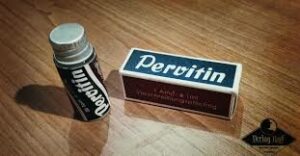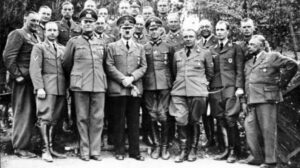While World War II is gaining publicity and conversations are being held studying it to prevent a repetition of what remains the most destructive war in history, very few people know how drugs played a primary role in World War II.
For a long time, there have been rumours about the role drugs played in World War II; these rumours went unconfirmed until Ohler released his best-selling book, “Der Totale Rausch” (The Total Rush), which forced everyone to acknowledge how the use of drugs by the German armed forces affected the war.
Methamphetamine, known as crystal meth, was so popular that it had a pill form, Pervitin. The Temmler pharmaceutical company, based in Berlin, developed the tablet, and in 1938, it was introduced as the magic pill that helped with depression and boosted alertness, among its other uses. For a while, pharmaceutical companies sold it over the counter.

Otto Ranke, a military doctor, experimented on 90 college students with Pervitin. Based on his experiments’ results, he decided that the drug would help Germany win the war. This was because, with Pervitin, the Wehrmacht soldiers could stay awake for days at a time and march many miles without resting.
A “stimulant decree” was issued in April 1940. This decree saw that over 35 million tablets of Pervitin and Isophan (a modified version of the Pervitin developed by the Knoll pharmaceutical company) were sent to the front lines. These pills fueled the Nazis’ “Blitzkrieg” invasion of France from the Ardennes mountains.
However, the Nazi soldiers weren’t the only ones popping pills. Allied soldiers also used Benzedrine, an amphetamine that helped deal with combat fatigue, so Germans weren’t the only ones taking performance-enhancing drugs.
Ohler’s book showed that the German armed forces weren’t the only ones using drugs, as the Nazi leaders also indulged in it. He said in an interview when his book was first published that “Not all of them took every drug. Some more, some less. Some of them were on methamphetamine—for example, Ernst Udet, the Chief of Aircraft Procurement and Supply. Others were on strong anaesthetics, like Göring, whose nickname was ‘Möring,’ from morphine.”

Detailed records backed up his book, and Hitler’s physician, Dr Theodor Morell, left. He studied Dr Theodor Morell’s records for years in the Federal Archive in Koblenz, the Institute for Contemporary History in Munich and the National Archives in Washington, D.C., so he could write the facts.
Dr Morell met Hitler after he treated the official Reich photographer, Heinrich Hoffmann. He also helped treat Hitler’s intestinal problems, which became their relationship’s start. Morell notes that the relationship lasted for over nine years, and during this period, he injected Hitler almost daily with various drugs, including amphetamines, opiates and barbiturates.
His relationship with Hitler enabled him access to high-status Nazi officials who became his clients. Morell also writes about having to give Hitler frequent doses of Eukodal, the synthetic opiate oxycodone, before he took major decisions and participated in meetings.
The intention of Ohler’s book and this article isn’t to absolve the Nazis of their war crimes but to shed light on how their drug use influenced some of their decisions and how the drug served as a war strategy.